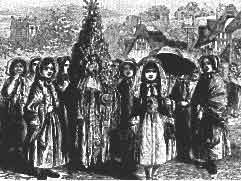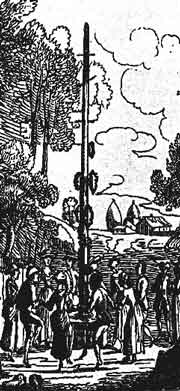Did you know that by the1580s, during the reign of Elizabeth 1, May Day had become a big public festival in Banbury?
Each year great tree trunks were decorated with garlands of flowers and
erected as maypoles, around which the local community danced and made
merry on Mayday, and during the May games and Whitsun ales which
followed.
Looking at other parallels it is likely that a May Queen was crowned.
Morris dancers performed and humorous plays were acted out on the
streets with such characters as: Robin Hood, Maid Marion (a man dressed
as a woman) and Friar Tuck , who also joined the morris men in their
dancing. The performers might even have included fools, hobby horses
and a “Jack in the Green” , a kind of walking bush covered from head to
toe with forest greenery. The fun and games, accompanied by feasting
and sports, were commonplace in towns and cities up and down the
country between May and July,
So when did it all stop and why?
In 1589 the Neithrop maypole hit the national headlines when it became
the subject of a bitter row between local puritans and other
townspeople. A group of puritans, apparently led by Anthony Cope M.P.
Lord of the Manor of Hanwell, attempted to prevent the raising of the
Neithrop Maypole by force.The revellers, supported by John Danvers,
Sheriff of Oxfordshire, of Calthorpe House, vigorously resisted intent
on their merrymaking, and a riot ensued.
In the weeks that followed both Anthony Cope and John Danvers used
their power and influence in Banbury to challenge the other’s position.
Richard Wheatley, Constable of Banbury, wrote to William Long,
Constable for Neithrop and Calthorpe instructing him to take down any
maypoles in his area, and to suppress any celebrations around them.
On May 20th 1589 John Danvers appealed to Queen Elizabeth’s Privy
Council in London who agreed, in a reply sent on May 24th, that these
traditional celebrations should be allowed on condition that they did
not interfere with people going to Church on Sundays.
Anthony Cope complained that John Danvers had insulted and threatened
him, and Richard Wheatley, and the matter was finally taken to the
Oxford Assize Court in July 1589, which found in favour of Anthony Cope
and his puritan followers. Anthony Cope and his followers went on to
destroy Banbury’s famous market crosses eleven years later in July 1600.
So how do we know?
Letters and other documents about these events still exist today in the
Acts of the Privy Council , and the Domestic State Papers.
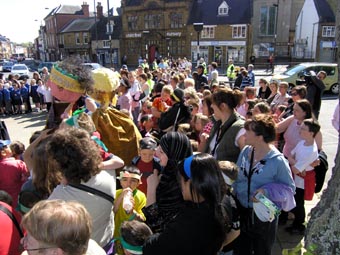
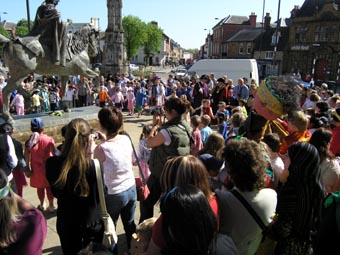
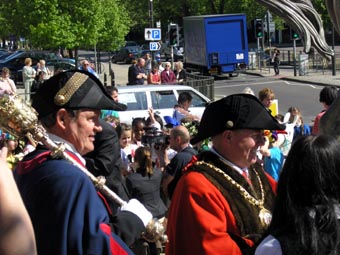
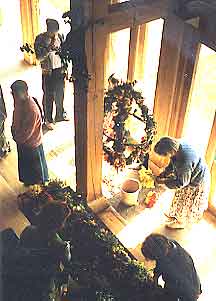 Garland making
Garland making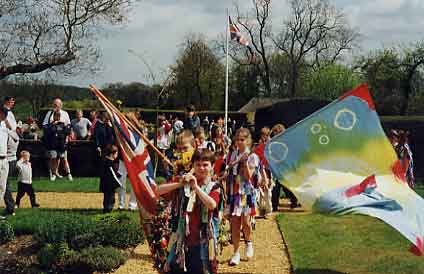
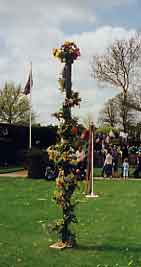 The May pole patterned after seventeenth century examples
The May pole patterned after seventeenth century examples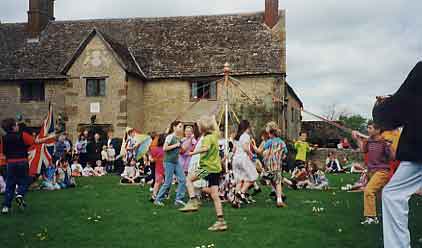
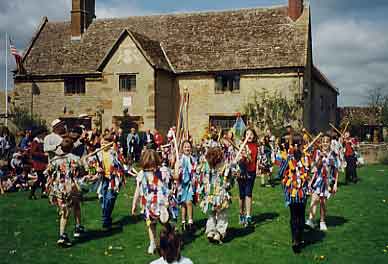 Stick dancing
Stick dancing